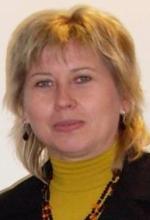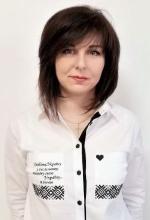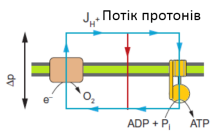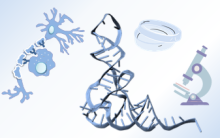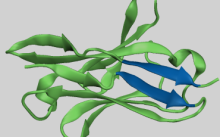Biochemistry (09 2023)
In the course presented here, we will discuss the molecular basis of biological system functioning and main biochemical processes underlying general metabolism of carbohydrates, proteins, lipids and nucleic acids. A special attention will be focused on coordination of metabolism of different biological compounds and its regulation by vitamins and hormones. Besides the classic enzymatic metabolism, this course is complemented by our modern understanding of non-enzymatic processes in biological systems and their role in the functioning of living organisms.
General aspects of metabolism: anabolism and catabolism. Thermodynamic bases of metabolism. The first and second laws of thermodynamics. Endergonic and exergonic reactions. Metabolic Pathways. Oxidation and reduction reactions. Redox potential. The Nernst equation. Biological oxidation. High energy phosphates. Chemical structure and biological role of ATP.
Carbohydrates: general characteristics and their role in metabolism and energy of organisms. Metabolism of glycogen: chemistry, biological sense and reciprocal regulation of glycogen metabolism by cyclic AMP. Biological role and chemistry of the glycolytic pathway. Fate of pyruvate after glycolysis.
General aspects of aerobic cellular respiration. Chemistry and biological significance of oxidative decarboxylation of pyruvate and tricarboxylic acid cycle (TCA). Their regulation. Substrate-level phosphorylation. Energy balance of complete glucose oxidation. Modified TCA pathways.
General characteristics and principle of functioning of the mitochondrial electron transport chain. Mechanism of oxidative phosphorylation. Chemi-osmotic theory. ATP synthase. Regulation of oxidative phosphorylation. Mitochondrial electron transport chain is a source of free radicals. General aspects and biological significance of non-mitochondrial electron transport chains.
Gluconeogenesis: chemistry and biological sense. Entrance of lactate, glycerol, alanine, and propionate in gluconeogenesis. Interplay between glycolysis and gluconeogenesis. Cori cycle. Reciprocal regulation of glycolysis and gluconeogenesis. Futile cycles.
Pentose phosphate pathway: chemistry, regulation and biological sense. Interplay between pentose phosphate pathway and glycolysis. Polyol pathway, chemistry and its biological role. Entrance of fructose and galactose in glycolysis. Metabolism of alcohol.
Lipids: general characteristics and their role in metabolism and energy of organisms. Catabolism of triacylglycerides: the role of hormones. Fatty acid oxidation: activation and transport across the mitochondrial membrane. β-oxidation of saturated fatty acids with an even number of carbon atoms. Energy balance of complete oxidation of palmitic acid. Oxidation of unsaturated fatty acids. Oxidation of fatty acids with an odd number of carbon atoms. α- and ω-oxidation of fatty acids.
Biosynthesis of fatty acids: shuttle mechanism of acetyl-CoA transportation across the mitochondrial membrane, formation of malonyl-CoA. Biosynthesis of saturated and unsaturated fatty acids. Regulation of oxidation and synthesis of fatty acids. Biosynthesis of triacylglycerides and phospholipids.
Biological role, chemistry and regulation of cholesterol biosynthesis. Inhibitors of the process, statins. Metabolism of ketone bodies.
General pathways of catabolism of amino acids. The role of vitamins. Deamination of amino acids: types and general characteristics. Oxidative deamination of amino acids. The role of glutamic acid. Transamination of amino acids: mechanism and biological significance. Non-direct deamination. The role of glutamic and aspartic acids. Transreamination. Synthesis of non-essential amino acids. Decarboxylation of amino acids and their derivatives. Biogenic amines.
Ammonia binding, transportation, and detoxification. Ammonia metabolism in animals. Urea biosynthesis. Relationship between tricarboxylic acids and the ornithine cycles (Krebs bicycle).
General characteristics of free radicals and reactive oxygen species and their reactions. Non-enzymatic glycosylation (glycation). General characteristics of reactive carbonyl species and advanced glycation end products. Generation of reactive oxygen and carbonyl species in living systems, their reaction with cellular constituents. Mechanisms of protection against the reactive forms. General aspects of the theory of carbonyl/oxidative stress. Glycoxidation. "Useful" role of reactive species: signaling and involvement in immune response.
Degradation and biosynthesis of purine and pyrimidine nucleotides. General characteristics, chemistry, biological role and regulation of the processes.
Coordination of carbohydrate, lipid, and protein metabolism. Involvement of vitamins and hormones in the metabolism regulation.

